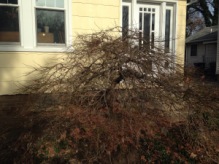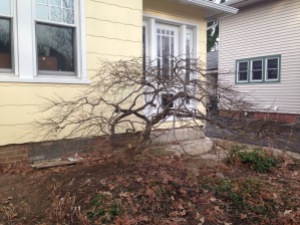Is everybody cozy?
To some, spending hours outside in below freezing temps may sound unappealing, but this is when I get excited! Every tree I see, I can’t help but imagine which limbs I would remove, how that will cause the tree to respond, and what I can get the tree to do for the greater good. That said, I apologize to people behind me at stoplights.
Here are some good reasons to prune now:
When plants are dormant, they don’t feel the stress of it like they do when they are pumping juices and making food. Also, you are not removing food producing leaves with every cut.
Pruning now prevents infestations of many insects and diseases that take advantage of open wounds during the growing season.
Seeing branch structure is easier with no leaves on the trees, and it’s easier to clean up. And because you’re all covered up, even sticky evergreens are fun to play with.
Here are some objectives to be achieved that you may not have thought of:
For a tight hedge that has become leggy, this is the best time to carefully prune to encourage fast regrowth of inside, and fluffy lower foliage.
Correction of unfortunate pruning mistakes made by well-meaning folks which cause the plant to misbehave, resulting in more maintenance and a plant that doesn’t live up to it’s full aesthetic potential, (in other words, is ugly)

Now, here is a 25 plus year old Japanese maple allowed to grow with little pruning, The owners loved the tree, but were afraid of making a wrong move. Her attachment to the tree (they had planted as a tiny investment when they bought the house) spurred her to call me.

Once the dead branches and limbs that were growing mischievously were removed, the majestic structure that is a Japanese maple, was allowed to fulfill its destiny.
Disclaimer alert! There are some trees and occasions that prefer summer pruning. Please be advised.









